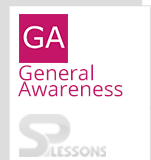 Introduction
Introduction
History is a very important subject for Railway Recruitment exams and UPSC Exams. UPSC NDA and NA Prelims Exam is the combination of Mathematics and General Ability. History is one of the most important topics in the General Ability section. All these questions are easily understandable format. UPSC NDA and NA History Quiz 2 is very useful to get the maximum marks from the General Ability sections. Candidates can check the daily updates at UPSC Official Website
 Pattern
Pattern
| Paper Mode | Subject | Marks | Duration |
|---|---|---|---|
| Paper-I | Mathematics | 200 Marks | 2 hours |
| Paper-II | General Ability | 200 Marks | 2 hours |
 Samples
Samples
1. Under the Guptas in eastern India, there was probably an intermediate level of administration between vishayas (districts) and villages. Identify it.
-
A. Bhukit
B. Pradesa
C. Vithi
D. Ahara
-
A. Agra
B. Delhi
C. Dhar
D. Gulbarga
-
A. Ajivikas
B. Charvakas
C. Jainas
D. Pasupatas
-
A. 321 BC
B. 301 BC
C. 261 BC
D. 241 BC
-
A. Assam
B. Bihar
C. Madras
D. Punjab
6. The Venetian traveler who travelled with his wife and reached Vijayanagar around 1420 was
-
A. Athanasius Nikitin
B. Nicolo de Conti
C. Ibn Batuta
D. Ferishta
-
A. Shankracharya was born that year.
B. Harsha Vardhana, the last Buddhist king, died.
C. Samudragupta converted to Hinduism.
D. All Muslim invaders were defeated.
-
A. S.N. Sen
B. R.C. Mazumdar
C. B.G. Tilak
D. V.D. Savakar
-
A. Abstention from stealing
B. Non-injury
C. Brahmacharya or continence
D. Non-attachment
-
A. two centuries
B. three centuries
C. four centuries
D. a little over one century
11. The use of spinning wheel (Charkha) became common during the
-
A. 9th Century AD
B. 10th Century AD
C. 12th Century AD
D. 14th Century AD
-
A. Bhojpuri
B. Magadhi
C. Pali
D. Sanskrit
-
A. Santhals
B. Ahoms
C. Pagal Panthis
D. Ramosi
-
A. Travancore
B. Baroda
C. Hyderabad
D. Mysore
-
A. Assam
B. Punjab
C. Bengal
D. N.W.F.P and the Sylhet district of Assam



